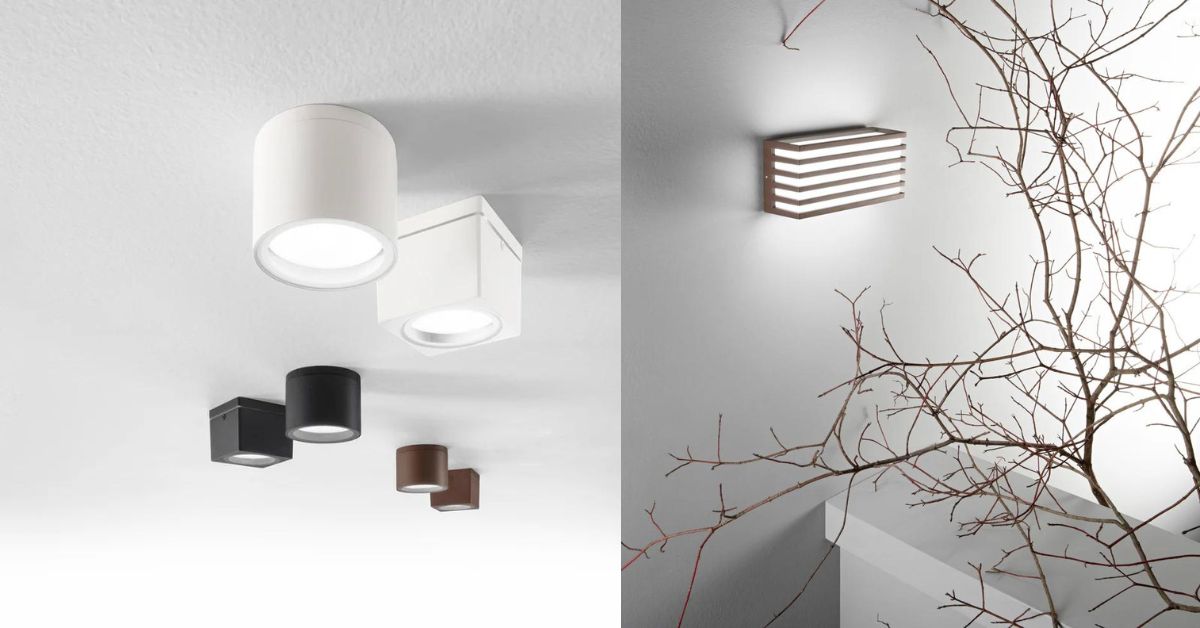
When it comes to lighting your home’s outdoor spaces , choosing between outdoor wall lights and outdoor ceiling lights can make a big difference in both functionality and aesthetics. These two types of fixtures have distinct features and benefits that can impact the look and feel of your outdoor spaces. In this blog, we’ll explore the key differences between outdoor wall lights and outdoor ceiling lights , their benefits, and how to choose the right type for your needs.
Outdoor wall lights are lighting fixtures that are mounted on the wall and project light outward. This type of lighting can serve a variety of purposes, including decorative lighting and functionality. Wall lights can be installed along pathways, near entrances, and on the facades of homes.
Outdoor ceiling lights , on the other hand, are mounted on the ceiling or soffit of a porch or veranda. They provide a diffused and uniform light, ideal for illuminating large areas without creating shadows. They are especially useful for areas such as terraces, porches and patios, where constant and diffused lighting is needed.
Outdoor wall lights offer a wide variety of styles, ranging from modern to classic, from rustic to contemporary. They can have minimalist designs , with clean lines and materials such as stainless steel or aluminum, or they can be more ornamental with decorative details. This type of lighting can also serve as a decorative element, highlighting particular architectural features of the facade.
Outdoor ceiling lights tend to be more subtle and less visible than wall lights, blending effortlessly into the ceiling or roof. There are sleek, understated designs that are ideal for maintaining a clean, uncluttered look, and they can be made from weather-resistant materials like tempered glass and painted aluminum.
Outdoor wall lights are perfect for lighting entryways, walls, and pathways. They can also be used to highlight plants or decorative elements. Installed on the sides of a front door, wall lights can create a welcoming and inviting atmosphere. They can also be used to illuminate stairs or pathways , improving safety and accessibility at night.
Outdoor ceiling lights are ideal for large spaces such as porches, patios, and porches. They provide diffused light that reduces shadows and evenly illuminates the entire space. They are perfect for areas where people spend a lot of time, such as outdoor gathering places. Their installation on the ceiling prevents the light sources from being easily knocked over or damaged.
Installing outdoor wall lights is relatively simple and can be done on any sturdy wall. However, it is important to choose models with good protection against water and humidity. Maintenance includes regular cleaning to prevent dust and debris from accumulating and ensuring that seals are in good condition to prevent leaks.
Outdoor ceiling lights are mounted on the ceiling and generally require more precise installation. It is important to ensure that the electrical system is adequate and that the ceiling light is well secured. Maintenance is simple and includes occasional cleaning of the glass or shade to maintain good light quality.
Both ceiling lights and outdoor wall lights can help save energy thanks to the motion sensor that allows the light to turn on only when someone passes by, thus avoiding waste.
Click on the photos to discover wall and ceiling lights with motion sensors.
Both outdoor wall lights and ceiling lights offer unique advantages for lighting outdoor spaces. Wall lights are excellent for highlighting architectural details and illuminating pathways, while ceiling lights provide even, diffused light that is ideal for large areas. Choosing the right type will depend on your specific needs and the aesthetic you are trying to achieve. With careful planning and thoughtful selection, you can transform your outdoor spaces into functional and welcoming environments for any occasion.